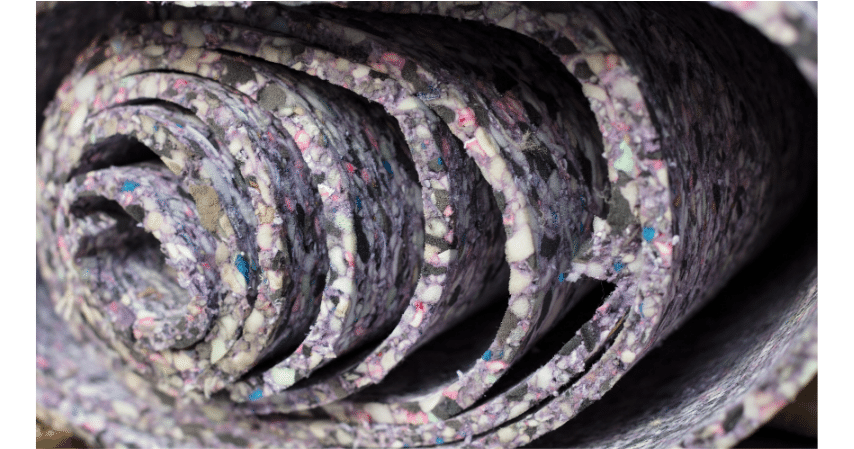Choosing a carpet padding
The two metrics to consider when choosing a carpet padding are thickness and density. The type and thickness of padding you need vary based on the carpet type and traffic levels. For example, bedrooms, lounge areas, and other rooms with light to moderate traffic can use thicker and softer padding. Living rooms, hallways, stairs, and other heavy traffic areas require thinner, firmer padding.
Padding thickness
It is vital to know what thickness is best for your specific carpet. A thicker pad isn't always the best. With some carpet types, thicker padding might even be worse. It may not be as durable, and anything over 8/16″ will cause installation problems. In general, the thickness for carpet padding shouldn't be more than ½". Most carpets do best with a 7/16" pad. Short-pile and Berber carpets often require a thinner pad because a thicker pad can have too much "give" and damage them. These carpet types usually do best with padding no thicker than ⅜".Residential cut pile, cut-loop, or high-level loop carpet require resilient, firm padding with a thickness between 1/4" and 7/16". Types of padding for these carpets include various polyurethane foams, including the very common bonded foam product often referred to as "rebond."Berber carpet, thinner loop, or short-pile carpet is made with large, wide loops, and it has been found that a stable, low-flexing padding is necessary. Thicker, softer padding will not work, so it should not exceed 3/8". The best choice is usually a fiber pad or slab rubber. Make sure to check with the carpet manufacturer to see if a specific padding is required.
Padding density
Carpet padding density is almost always measured in pounds per cubic foot. If you want your carpet to last, you will want to go with at least a 6.5-pound pad. If you want your carpet to last at least ten years, we recommend going all out with a pad with a density of 8 pounds or more.
Recommended densities by pad type
Foam pad: Density is typically 2 to 5 pounds.
Frothed foam pad: Density should be 12 pounds or more for durability.
Rebond pad: Density is 5 to 10 pounds. Go for a minimum of 6 pounds if durability is a big concern in that area of your home.
Synthetic fiber pad: Usually rated in ounces but may be rated in pounds. Go for a minimum of 30 ounces and preferably 40 ounces (or 7.5 pounds) or more if durability is important.
Waffle rubber pad: Go for at least 64 ounces. 90 ounces is preferred.
Slab rubber pad: Usually comes in 18 to 22 pounds. We recommend at least 21 pounds for durability. One of the biggest mistakes carpet shoppers make when it comes to padding is squeezing it and looking for the softest pad. Softer pads are thick and low-density, which is precisely what you don't want. If you do want to test the padding by squeezing it, know that firmer is better. When you visit us at Satolli Carpet & Floor Covering, we can answer you questions and help you see the difference in the various paddings available. Now that you know the importance of choosing quality carpet padding and what to look for, click here for more information on each padding type.
If you are looking for carpet padding that is best for dog urine and other moisture concerns, click here. Even if you're not in the market for new carpet, it might be a good idea to upgrade your current padding. Upgrading your carpet pad makes even the cheapest, oldest carpet feel more plush and cushiony. Come test out our padding and instantly feel the difference a good carpet pad makes. You won't regret giving your carpet and your feet that extra support! If you have any other questions about which carpet padding is best for you, give us a call, send an email, or request an appointment with our carpet experts today.

